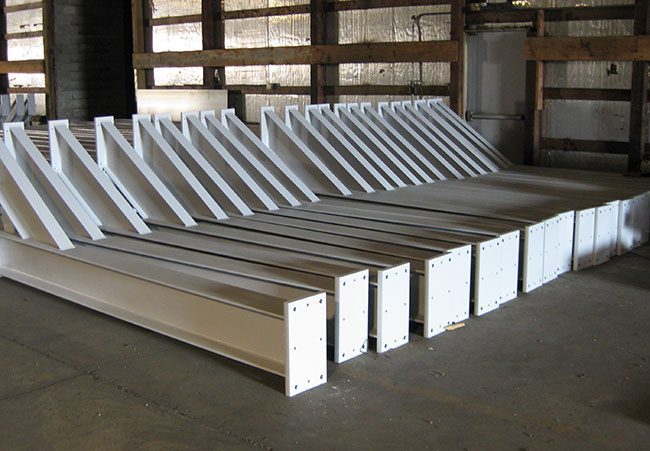How Can Structural Steel Fabrication Meet Green Standards?

The use of structural steel has been embraced with open arms by the construction industry. But this growing popularity has led certain sections of society to question how safe structural steel is to use with respect to the environment. Let’s examine that question from all angles to determine whether there are methods through which structural steel fabrication can meet various green standards.
Reuse of Waste
The leftover material that is a byproduct of the steel fabrication process is used for a number of things, such as road construction and cement manufacturing. This means there the amount of waste that gets left over and seeps into the ground and water supplies is significantly reduced. The efficient use of waste product is one the biggest hallmarks of a sustainable production process.
Recycled Steel
By some estimates, as much as 80% of the steel that is used has been recycled from earlier structures. This is possible because steel is one product that can be endlessly recycled and reused, which is known as multi-cycling. The process of recycling steel produces less carbon than creating new steel would. Since the same steel gets used repeatedly, less damage is inflicted on the environment through constant digging to find new sources of iron to convert into steel.
Environmentally-Friendly Welding
Some of the methods of carrying out welding in a green manner are through:
Vacuum Soldering
Voids are reduced while the joints are placed in a vacuum chamber, leading to better soldering which also does not harm the environment.
Friction Welding
Solid state welding where the heat is generated by rubbing metal pieces against one another instead of through arc welding.
Diffusive Welding
A solid state welding process through the migration of atom across the welding joint due to concentration gradients.
Producing Eco-Friendly Products
The ‘Output Approach’ is a definition of a process being deemed environmentally friendly if the final product is eco-friendly and good for the environment. By this definition, the steel fabrication process is definitely green, since the structural steel that has been manufactured is put to a number of green uses, including:
- The metal plates and columns that are fabricated are used in solar panels, wind turbines and electric vehicles.
- Metal construction is a fast and efficient process, reducing the amount of energy consumed in building new structures.
- Leftover steel is reused in some manner or the other, leading to less waste matter being left at sites which make use of steel.
- Because steel has a superior strength-to-weight ratio, we can use less amounts of it for creating structures and obtain the same amount of strength and support as bigger pieces of concrete or wood.
Thus we see that there are several methods of fabrication which can ensure that the structural steel being used is produced at minimal cost of damage to the environment. As more efficient methods of production are developed, fabrication processes are only going to grow more environment-friendly and cost effective.


